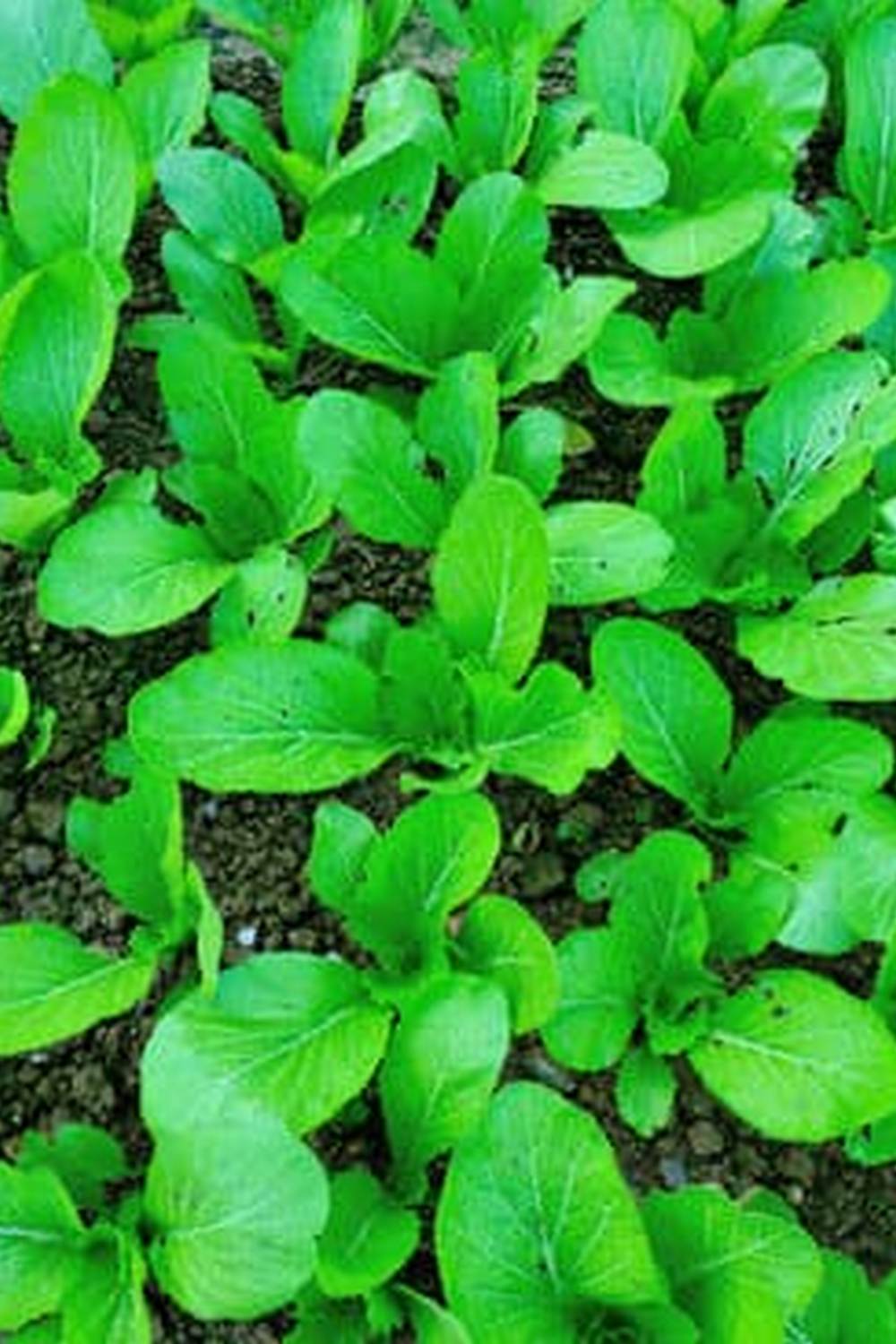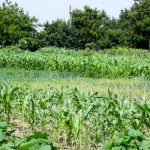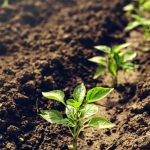Are you looking to start a vegetable garden but not sure where to begin with the soil? Vegetable gardening soil is a crucial element in successfully growing a bountiful and healthy crop of vegetables. From the type of soil to testing and preparing it for planting, there are several important factors to consider when it comes to creating the optimal environment for your vegetables to thrive.
Before you start digging and planting, it is essential to understand the importance of good soil for vegetable gardening. The quality of your soil can directly impact the growth, yield, and overall health of your vegetable plants. Whether you are a seasoned gardener or a novice, knowing how to choose, test, prepare, and maintain your vegetable gardening soil is key to achieving success in your garden.
In this article, we will explore the different types of vegetable gardening soil, how to test and prepare your soil for planting, as well as tips for improving and maintaining the quality of your soil. Whether you have sandy or clay-heavy soil, we will provide insights into choosing the right fertilizer and implementing mulching techniques that will help you overcome common soil-related issues in vegetable gardening.
So let’s roll up our sleeves and dig into the world of vegetable gardening soil.
Importance of Good Soil for Vegetable Gardening
The importance of good soil for vegetable gardening cannot be overstated. The quality of the soil in which vegetables are grown directly impacts the health, yield, and overall success of the plants. Proper soil maintenance can lead to more robust and productive vegetable gardens.
One of the key components of good vegetable gardening soil is its texture. Soil that is well-draining, loose, and airy provides an optimal environment for plant roots to grow and absorb nutrients. Additionally, adequate levels of organic matter in the soil can improve its structure and water-holding capacity, both essential for healthy plant growth.
Another critical aspect of good soil for vegetable gardening is its nutrient content. Essential nutrients such as nitrogen, phosphorus, and potassium must be present in sufficient quantities for vegetables to thrive. It is important to regularly test the soil to assess its nutrient levels and pH balance before planting vegetables. Based on these tests, gardeners can then make informed decisions about adding fertilizers or other amendments to optimize their vegetable gardening soil.
Adequate aeration, drainage, and proper nutrient balance are all crucial elements that contribute to the importance of good soil for successful vegetable gardening. Gardeners should prioritize maintaining healthy soils by implementing proper testing and management practices.
| Key Elements | Importance |
|---|---|
| Soil Texture | Optimal environment for plant roots to grow and absorb nutrients |
| Nutrient Content | Sufficient quantities are required for vegetables to thrive |
| Aeration and Drainage | Essential for healthy plant growth |
Types of Vegetable Gardening Soil
When it comes to vegetable gardening, the type of soil you use can significantly impact the success of your garden. There are several types of soil commonly used for vegetable gardening, each with its own unique properties and characteristics.
One common type of vegetable gardening soil is sandy soil, which has large particles and excellent drainage. While this can be beneficial for some plants, it also tends to dry out quickly and may not retain nutrients well. On the other hand, clay soil is composed of tiny particles, resulting in poor drainage but good nutrient retention. Finally, loamy soil is considered ideal for vegetable gardening due to its balanced combination of sand, silt, and clay.
It’s important to determine the type of soil you have in your garden before planting your vegetables. One way to do this is by conducting a simple soil texture test using a mason jar filled with water and a sample of your soil. This will help you understand the composition of your soil and determine which amendments may be necessary for optimal vegetable growth.
In addition to these primary types of vegetable gardening soils, there are also specialty mixes available for container gardening or raised bed gardening. These mixes are specifically formulated to promote healthy root growth and provide adequate drainage. Regardless of the type of soil you choose, it’s essential to continually monitor its quality and make any necessary adjustments to ensure the success of your vegetable garden.
| Type of Soil | Characteristics |
|---|---|
| Sandy Soil | Large particles, excellent drainage, poor nutrient retention |
| Clay Soil | Tiny particles, poor drainage, good nutrient retention |
| Loamy Soil | Balanced combination of sand, silt, and clay; ideal for vegetable gardening |
| Specialty Mixes | Formulated for container or raised bed gardening; promote healthy root growth and adequate drainage. |
Testing and Preparing Your Soil for Planting
When it comes to vegetable gardening, the quality of your soil can make a big difference in the success of your crops. Testing and preparing your soil for planting is an important step in ensuring that you have the right conditions for your vegetables to thrive. Here are some tips for testing and preparing your vegetable gardening soil:
1. Soil Testing: Before you start planting, it’s important to test your soil to determine its pH level and nutrient content. You can purchase a soil testing kit from a garden center or send a sample to a professional lab for analysis. Once you know the results, you can make any necessary adjustments to ensure that your soil is suitable for vegetable gardening.
2. Amending Your Soil: Depending on the results of your soil test, you may need to amend your soil with organic matter or other additives. Adding compost, manure, or other organic materials can improve the texture and fertility of your soil, providing a better environment for plant growth. It’s also important to address any nutrient deficiencies by adding specific fertilizers or minerals as recommended by the soil test results.
3. Soil Preparation: After testing and amending your soil, it’s time to prepare the planting area. Use a garden fork or tiller to loosen the soil and incorporate any amendments thoroughly. Remove any weeds or debris from the area before planting to create a clean and healthy environment for your vegetables.
By following these steps for testing and preparing your vegetable gardening soil, you can create an optimal growing environment for your crops and improve the overall health of your garden. Remember that healthy soil is essential for successful vegetable gardening, so investing time and effort into this crucial step can pay off in bountiful harvests all season long.
Choosing the Right Fertilizer for Vegetable Gardening Soil
When it comes to vegetable gardening, choosing the right fertilizer for your soil is crucial for the health and productivity of your plants. Fertilizers provide essential nutrients that are necessary for the growth and development of vegetables. By understanding the different types of fertilizers available and their specific benefits, you can make an informed decision on what will work best for your vegetable gardening soil.
Types of Fertilizers
There are several types of fertilizers to choose from, including organic and synthetic options. Organic fertilizers are derived from natural sources such as compost, manure, or bone meal, and they provide a slow release of nutrients to the soil. On the other hand, synthetic fertilizers are chemically manufactured and offer a quick release of nutrients. Each type has its own advantages and disadvantages, so it’s important to consider your specific gardening needs when making a selection.
Understanding Nutrient Requirements
Before choosing a fertilizer, it’s important to understand the nutrient requirements of your vegetables. Different plants have varying needs for nitrogen, phosphorus, potassium, and other essential elements. Conducting a soil test can help you identify any deficiencies in your vegetable gardening soil and determine which nutrients need to be supplemented through fertilization.
Application Methods
Once you’ve selected the right fertilizer for your vegetable gardening soil, it’s essential to follow proper application methods. Whether you’re using granular or liquid fertilizers, applying them at the correct time and in the appropriate amounts is crucial for achieving optimum results.
Over-fertilizing can lead to nutrient imbalances and environmental issues, while under-fertilizing may result in poor plant growth. By carefully following instructions for application, you can ensure that your vegetables receive the necessary nutrients to thrive.
Mulching Techniques for Vegetable Gardening Soil
When it comes to maintaining healthy vegetable gardening soil, mulching is a key practice that can greatly benefit your plants. Mulch helps to retain moisture, suppress weeds, regulate soil temperature, and improve overall soil structure. Here are some effective mulching techniques to consider for your vegetable garden:
1. Organic mulch: Using organic materials such as straw, compost, grass clippings, or chopped leaves can provide valuable nutrients to the soil as they decompose. These materials also help improve the soil’s ability to retain moisture and reduce erosion.
2. Plastic mulch: This type of mulch is especially beneficial for warming the soil in cooler climates and suppressing weed growth. It also prevents water loss through evaporation and can be particularly useful for heat-loving crops like tomatoes and peppers.
3. Biodegradable mulch: Biodegradable mulches made from materials like cornstarch or paper break down over time, adding organic matter to the soil while eliminating the need for removal at the end of the growing season.
In addition to these techniques, it’s important to apply mulch properly based on the specific needs of your vegetable garden and the types of crops you are growing. By incorporating these mulching techniques into your gardening routine, you can improve the overall health and productivity of your vegetable gardening soil, leading to better yields and healthier plants. Remember to choose a natural fertilizer that complements your chosen technique.
Common Soil-Related Issues in Vegetable Gardening
Soil Compaction
Soil compaction is a common issue in vegetable gardening that occurs when the soil becomes densely packed, making it difficult for plant roots to penetrate and access essential nutrients and water. This can lead to stunted growth and poor yield. To prevent soil compaction, avoid walking on garden beds and use raised beds to provide better drainage and aeration for the soil. Additionally, regular tilling and adding organic matter such as compost can help loosen compacted soil.
Weed Infestation
Weeds compete with vegetable plants for nutrients, water, and sunlight, which can significantly impact their growth and productivity. It’s important to regularly remove weeds from the garden to prevent them from overtaking the vegetable plants. Adding mulch to the soil surface can also help suppress weed growth by blocking out sunlight and preventing weed seeds from germinating.
Soil pH Imbalance
The pH level of the soil directly affects the availability of nutrients to plants. In vegetable gardening, it’s crucial to maintain a balanced pH level in the soil to ensure optimal plant growth. Testing the soil with a pH test kit is essential to determine if any adjustments need to be made. Adding amendments such as lime to raise pH or sulfur to lower pH can help create an ideal growing environment for vegetables.
By addressing these common soil-related issues in vegetable gardening, growers can create healthy, nutrient-rich soil that promotes robust plant growth and high yields. Taking proactive measures such as proper soil preparation, regular testing, and timely interventions will contribute to a successful vegetable gardening experience.
Tips for Improving and Maintaining Vegetable Gardening Soil
In conclusion, maintaining healthy and fertile soil is essential for successful vegetable gardening. Good soil provides essential nutrients, promotes strong root growth, and helps plants resist pests and diseases. By following the tips provided in this article, gardeners can ensure that their vegetable gardening soil remains in optimal condition for bountiful harvests year after year.
Regular testing and proper preparation of the soil before planting are crucial steps to take. This ensures that the soil has the right pH balance and nutrient levels for the specific vegetables being grown. Additionally, choosing the right fertilizer and implementing mulching techniques can further enhance the quality of the soil, providing a nurturing environment for vegetables to thrive.
It’s also important for gardeners to be aware of common soil-related issues that may arise, such as compaction, erosion, or imbalance of nutrients. By recognizing these problems early on, gardeners can take proactive measures to address them and maintain healthy soil. With ongoing care and attention to detail, vegetable gardening soil can be continually improved and sustained for long-term success in growing delicious and nutritious produce.
Frequently Asked Questions
What Type of Soil Is Best for Vegetable Garden?
The best type of soil for a vegetable garden is loamy soil, which is a combination of sand, silt, and clay. This type of soil provides good drainage and aeration for the plants’ roots, as well as adequate water retention.
Is Regular Potting Soil OK for Vegetables?
While regular potting soil can be used for vegetables, it’s not always the best option. Most commercial potting soils contain peat moss, which can make the soil too acidic for some vegetables. It’s important to check the pH level and nutrient content before using regular potting soil for vegetables.
What Is the Best Soil Amendment for Vegetable Garden?
The best soil amendment for a vegetable garden depends on the specific needs of the existing soil. Compost is generally a great all-purpose amendment because it improves soil structure, provides essential nutrients, and encourages beneficial microbial activity. Other options include aged manure, vermicompost, or organic fertilizers tailored to vegetable gardens.

If you’re looking to get into vegetable gardening, or are just looking for some tips on how to make your current garden better, then you’ve come to the right place! My name is Ethel and I have been gardening for years. In this blog, I’m going to share with you some of my best tips on how to create a successful vegetable garden.





